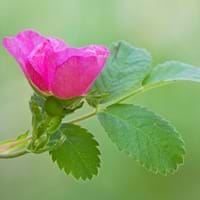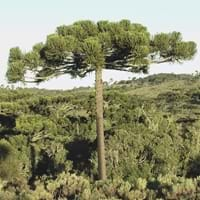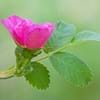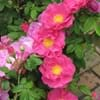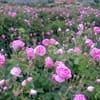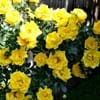Life Span
Perennial
Perennial
Type
Flowering Plants, Ornamental Plant, Perennial
Tree
Origin
California, Caribbean, Mexico
Mexico
Types
Not Available
Not available
Habitat
Chaparral, Foot Hills, Woodlands
Subtropical climates, subtropical regions
USDA Hardiness Zone
Not Available
Not Available
AHS Heat Zone
Not Available
Not Available
Sunset Zone
Not available
12, 13
Habit
Upright/Erect
Upright/Erect
Flower Color
Variety of colors
White
Flower Color Modifier
Bicolor
Not Available
Fruit Color
Non Fruiting Plant
Brown
Leaf Color in Spring
Gray, Gray Green
Not Available
Leaf Color in Summer
Gray, Gray Green
Not Available
Leaf Color in Fall
Gray, Gray Green
Not Available
Leaf Color in Winter
Gray, Gray Green
Not Available
Leaf Shape
Pinnate
Needle like
Plant Season
Spring, Summer, Fall
Spring, Summer, Fall, Winter
Sunlight
Full Sun, Partial Sun
Full Sun
Type of Soil
Loam, Sand
Loam, Sand
The pH of Soil
Acidic, Neutral
Acidic, Neutral, Alkaline
Soil Drainage
Well drained
Well drained
Bloom Time
Spring, Late Spring, Early Summer, Summer, Late Summer, Early Fall, Fall
Spring, Late Spring
Repeat Bloomer
Not Available
Yes
Tolerances
Drought
Drought
Where to Plant?
Container, Ground, Pot
Ground
How to Plant?
Cuttings
root cutting, Vegetative Reproduction
Plant Maintenance
Medium
Medium
Watering Requirements
Average Water Needs
Average Water Needs
In Summer
Lots of watering
Lots of watering
In Spring
Moderate
Moderate
In Winter
Average Water
Average Water
Soil pH
Acidic, Neutral
Acidic, Neutral, Alkaline
Soil Type
Loam, Sand
Loam, Sand
Soil Drainage Capacity
Well drained
Well drained
Sun Exposure
Full Sun, Partial Sun
Full Sun
Pruning
Remove damaged leaves, Remove dead branches, Remove dead leaves
Remove damaged leaves, Remove dead branches, Remove dead leaves
Fertilizers
All-Purpose Liquid Fertilizer
All-Purpose Liquid Fertilizer
Pests and Diseases
Beetles, Black Spot, Caterpillars, Downy mildew, Mosaic viruses, Powdery mildew, Rust, Scale insects, Thripes
Aphids, Mites
Plant Tolerance
Drought
Drought
Flower Petal Number
Double
Single
Edible Fruit
Not Available
No
Foliage Texture
Medium
Bold
Foliage Sheen
Glossy
Not Available
Invasive
Not Available
No
Self-Sowing
Not Available
No
Attracts
Birds, Butterflies
Not Available
Allergy
Rash
no allergic reactions
Aesthetic Uses
Showy Purposes
Not Used For Aesthetic Purpose
Beauty Benefits
Not Available
Not Available
Environmental Uses
Air purification
Air purification
Medicinal Uses
Not Available
Nutritive
Part of Plant Used
Flowers
Seeds
Other Uses
Oil is used in perfume, soaps, creams, etc.
Used for its medicinal properties
Used As Indoor Plant
Yes
No
Used As Outdoor Plant
Yes
Yes
Garden Design
Container, Cutflower, Feature Plant, Foundation, Mixed Border, Topiary / Bonsai / Espalier
Container, Rock Garden, Wall
Botanical Name
Rosa californica
Araucaria angustifolia
Common Name
California wildrose, California rose
candelabra tree, Parana pine, Brazilian pine
In Hindi
कैलिफोर्निया गुलाब
candelabra
In German
Kalifornische Hecken-Rose
Kandelaber
In French
Le rosier de Californie
candélabre
In Spanish
Rosa californica
Candelabra
In Greek
Καλιφόρνια αυξήθηκε
μανουάλια
In Portuguese
California aumentou
Candelabra
In Polish
California róży
świeczniki
In Latin
California resurrexit
candelabra
Phylum
Magnoliophyta
Coniferophyta
Class
Magnoliopsida
Pinopsida
Family
Rosaceae
Araucariaceae
Clade
Not Available
Not Available
Tribe
Not Available
Not Available
Subfamily
Not Available
Not Available
Number of Species
Not Available
Difference Between California Rose and Candelabra
If you are confused whether California Rose or Candelabra are same, here are some features about those plants to help you choose better. Many people think that these two plants have the same characteristics, but one can see California Rose and Candelabra Information and learn more about it. Fertilizers required for proper growth of California Rose are All-Purpose Liquid Fertilizer, whereas for Candelabra fertilizers required are All-Purpose Liquid Fertilizer. Hence, one should know the basic difference between California Rose and Candelabra if you are planning to have them in your garden to enhance its beauty.
<
Flowering PlantsImportance of California Rose and Candelabra
Want to have the most appropriate plant for your garden? You might want to know the importance of California Rose and Candelabra. Basically, these two plants vary in many aspects. Compare California Rose and Candelabra as they differ in many characteristics such as their life, care, benefits, facts, etc. Every gardener must at least have the slightest clue about the plants he wants to plant in his garden. Compare their benefits, which differ in many ways like facts and uses. The medicinal use of California Rose is Not Available whereas of Candelabra is Nutritive. California Rose has beauty benefits as follows: Not Available while Candelabra has beauty benefits as follows: Not Available.
Compare Facts of California Rose vs Candelabra
How to choose the best garden plant for your garden depending upon its facts? Here garden plant comparison will help you to solve this query. Compare the facts of California Rose vs Candelabra and know which one to choose. As garden plants have benefits and other uses, allergy is also a major drawback of plants for some people. Allergic reactions of California Rose are Rash whereas of Candelabra have no allergic reactions respectively. Having a fruit bearing plant in your garden can be a plus point of your garden. California Rose has no showy fruits and Candelabra has showy fruits. Also California Rose is not flowering and Candelabra is not flowering . You can compare California Rose and Candelabra facts and facts of other plants too.
